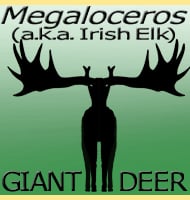Panochthus
In Depth Panochthus is a genus of glyptodont that lived across much of South America during the Pleistocene. Like some of its relatives, Panochthus was a large herbivore with bony armour plates that grew into a dome like structure over its back. The tail was also covered by bony armoured bands. Further Reading - Contribuci�n … Read more
